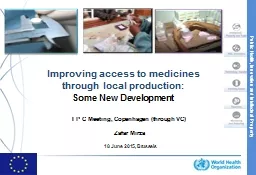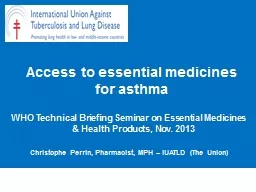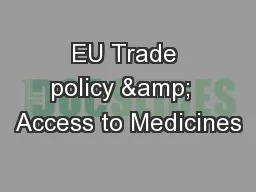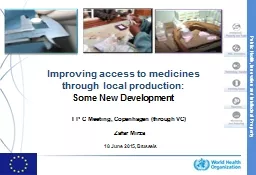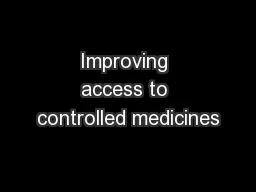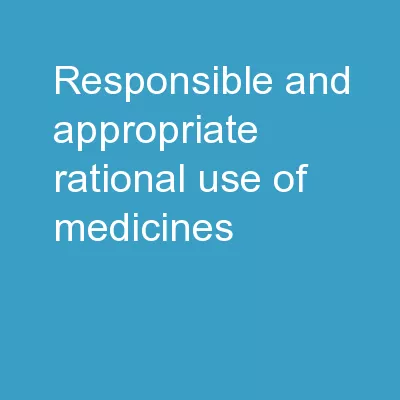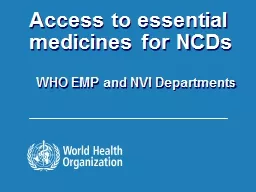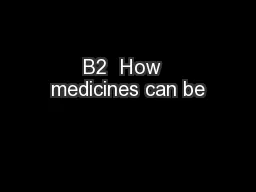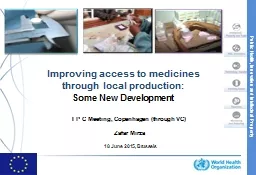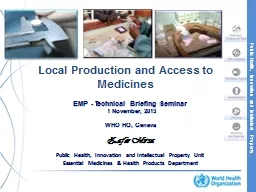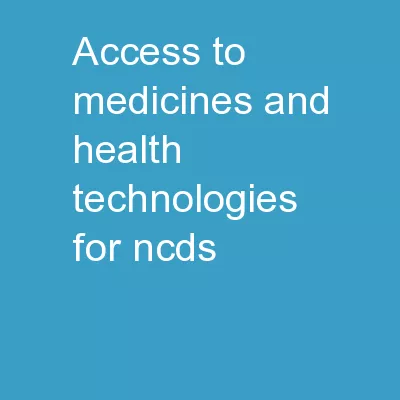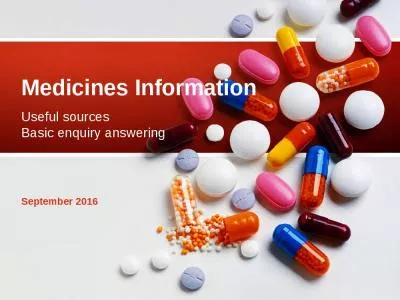PPT-Improving access to medicines through local production:
Author : phoebe-click | Published Date : 2019-02-28
Some New Development I P C Meeting Copenhagen through VC Zafar Mirza 18 June 2015 Brussels WHOEC Project Improving access to medical products in developing countries
Presentation Embed Code
Download Presentation
Download Presentation The PPT/PDF document "Improving access to medicines through lo..." is the property of its rightful owner. Permission is granted to download and print the materials on this website for personal, non-commercial use only, and to display it on your personal computer provided you do not modify the materials and that you retain all copyright notices contained in the materials. By downloading content from our website, you accept the terms of this agreement.
Improving access to medicines through local production:: Transcript
Download Rules Of Document
"Improving access to medicines through local production:"The content belongs to its owner. You may download and print it for personal use, without modification, and keep all copyright notices. By downloading, you agree to these terms.
Related Documents

